Medellín vs Lima, Peru, which is the better city to live? Medellín has been rated one of the top foreign retirement locations but Lima is also a viable place to live and compares favorably. Which is really better?
Live & Invest Overseas ranks Medellín as one of its top foreign retirement locations this year but it doesn’t include Lima at all in its list of the top foreign retirement locations.
International living ranks the country of Colombia as #6 in its top foreign retirement location this year. It ranks Peru as #15. International Living now ranks countries instead of cities.
Lima is located in the valleys of the Chillón, Rímac and Lurín rivers along the coast in Peru, overlooking the Pacific Ocean.
Medellín is located in a valley in the Colombian Andes Mountains and mountains surround it. Many expats consider Medellín the most livable city in Colombia.
Many expats I have met prefer Medellín. I also have met several expats living in Lima that enjoy living in Lima. However many expats living in one city have never visited the other.
It’s not really fair to compare the two cities if you haven’t been to both of them. I have lived in Medellín for over six years. But I have also traveled to Lima on vacation and for business plus I have a good friend living in Lima.
I have seen a few comparisons of Medellín vs Lima but these tend to miss several very important points or have a bias.
Both cities have their pros and cons. This comparison comprehensively compares these two cities in 21 categories, in no particular order.
Note in this article we only include photos of Lima. This website already has countless photos of Medellín.
The photo above is a view of the Miraflores neighborhood in Lima taken from the coast by David Baggins.
We previously compared Medellín vs Panama City, Medellín vs Cuenca, Bogotá vs Medellín, Medellín vs Pereira and Medellín vs Cartagena in previous articles on this website.
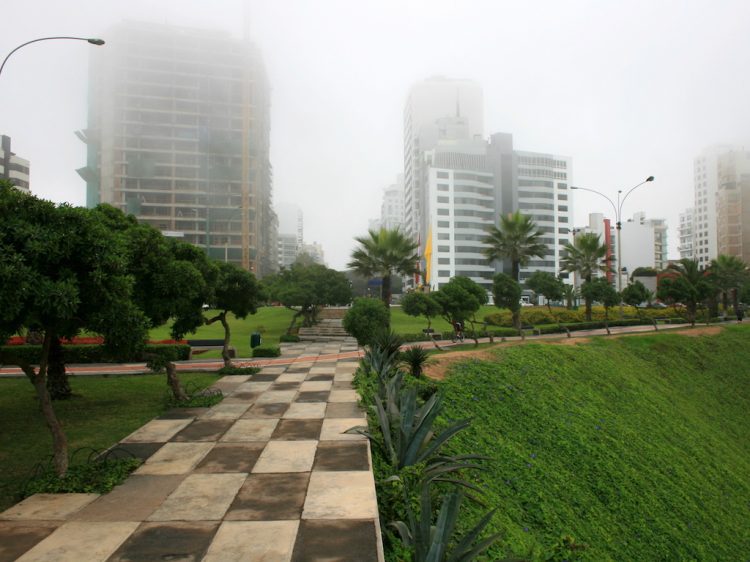
1. Climate
The edge goes to Medellín here. The average temperature during the year in Medellín is 72 ° F (22 °C). Medellín is known as “La Ciudad de la Eterna Primavera”, or the city of eternal spring”.
While in Lima the average annual temperature is cooler at 66.9 ° F (19.4 °C).
In Medellín, the average daily high temperature ranges from 81.0 to 82.8 °F (27.2 to 26.5 °C). The average daily low ranges from 61.7 to 63.3 °F (16.5 to 17.4 °C).
In Lima, the average daily high temperature ranges from 65.1 to 79.7 °F (18.4 to 23.1 °C). The average daily low ranges from 58.3 to 66.9 °F (14.6 to 19.4 °C).
The average humidity in Lima for the entire year is 82.8 percent due to its location on the coast. While relative humidity is high in Lima, rainfall is extremely low due to strong atmospheric stability.
Lima is actually considered desert. It’s so dry that Lima normally gets only about half an inch of rain for the entire year. It sometimes goes for months in Lima without rain so it is much less green than Medellín.
From June to November in Lima there is very little sunshine with an average of only 50.5 hours of sunshine per month. Heavy cloudiness in Lima during these six months drives locals to seek sunshine in Andean valleys located at higher elevations.
Lima typically gets only about 1,230 sunshine hours per year. While Medellín gets over 1,850 sunshine hours per year.
In Medellín the average humidity for each month ranges from 63 percent to 73 percent. The annual average humidity in Medellín is 68 percent.
In Medellín there is one month out of the year with heavy rain (October), which is normally over 220 mm (nearly 9 inches) of rain. The average rainfall in Medellín for the entire year is about 69 inches (1,752 mm) per year.
The bottom line is Lima has a humid climate with almost no rain. Lima also has much less sunshine than Medellín and it’s cooler. Medellin has a much sunnier climate but with more rain.
I give the climate edge to Medellín due to Lima having about six months of grey skies with cloudiness and overcast days where you won’t see the sun sometimes for weeks at a time but it also won’t rain.
In either Medellín or Lima you can easily survive without air-conditioning or heating.
2. Cost of Living
Medellín wins here. Similar real estate properties I have seen tend to be substantially cheaper in Medellín than in Lima.
The cost of living in terms of USD in Medellín has dropped dramatically over the past couple of years due to the strength of the US dollar compared to the Colombian peso.
While in Lima the cost of living in terms of USD hasn’t dropped as much as in Medellín as the Peruvian Sol hasn’t experience as dramatic currency moves as the Colombian peso.
Two cost of living comparison sites (Numbeo and Expatistan) both report that the cost of living is higher in Lima than in Medellín.
For example, Expatistan reports the cost of living in Lima is 28 percent higher than in Medellín.
An expat I met recently in Medellín that used to live in Lima told me his cost of living has dropped by roughly 25 percent since moving to Medellín last year. He said they he found many things that are cheaper in Medellín, especially the real estate.
However, keep in mind that your cost of living can vary dramatically based on your lifestyle in either city.
Some expats living in Peru avoid the high costs of Lima by living in a much smaller city or town in Peru where the cost of living can be lower. However the same thing can be done in Colombia.
3. Restaurants and Nightlife
Lima wins here. Lima is a much bigger city with a metro population of over 9.7 million. So it obviously has many more restaurant and nightlife options.
In comparison, Medellín has a metro population of a bit over 3.7 million, which means Lima is over twice as large as Medellín.
TripAdvisor lists over 1,900 restaurants in Lima. In comparison it lists over 920 restaurants in Medellín when you include the other municipalities in the metro area like Envigado and Sabaneta.
Lima is known as the Gastronomical Capital of the Americas, with cuisine mixing Spanish, Andean and Asian traditions.
The cuisine in Lima is often considered the best in South America and the local cuisine in Medellín doesn’t compare as well.
While Lima has many more restaurants, Medellín still has many good restaurant options, many of which have been covered on this website.
Lima also has many more nightlife options than Medellín due to being a much bigger city.
But Medellin still has many nightlife options as a sizeable city, which are sufficient for me and have been covered extensively on this website. Salsa also isn’t as popular in Lima as it is in Medellín.
4. Healthcare
Medellín arguably wins here. Medellín has eight of the top 43 ranked hospitals in Latin America, while Lima only has only two.
The top hospital in Medellín is Hospital Pablo Tobón Uribe, which is ranked #9 in Latin America. The top hospital in Lima is Clinica Internacional, which ranks #10 in Latin America.
Being a bigger city, Lima has more medical and dental providers than Medellín but they also have many more patients to care for.
The cost of health insurance tends to be somewhat higher in Lima than in Medellín.
5. Taxes
The two cities arguably tie here. In both Colombia and Peru residents are taxed on worldwide income.
In both countries you become a tax resident after living in the country for over 183 days.
However living in Colombia or Peru can be tax neutral for many expats. I have met many expats living in Colombia that pay no income taxes in Colombia.
I also have met some expats living in Peru that pay no income taxes in Peru.
I have lived in Colombia for over six years. But I have paid Colombian income taxes only one year that were less than 10 percent of the income taxes I paid in the U.S.
More information about Colombian Income Taxes is found here.
Property taxes in Colombia typically range from 0.3 to 3.3 percent. Property taxes in Peru typically range from 0.2 to 1.0 percent.
Sales tax (VAT) is lower in Medellín at 16 percent for most items. In Lima the sales tax (VAT) for most items is currently 18 percent.
We highly recommend that you talk to a tax professional before moving to a foreign country to understand all the tax implications.
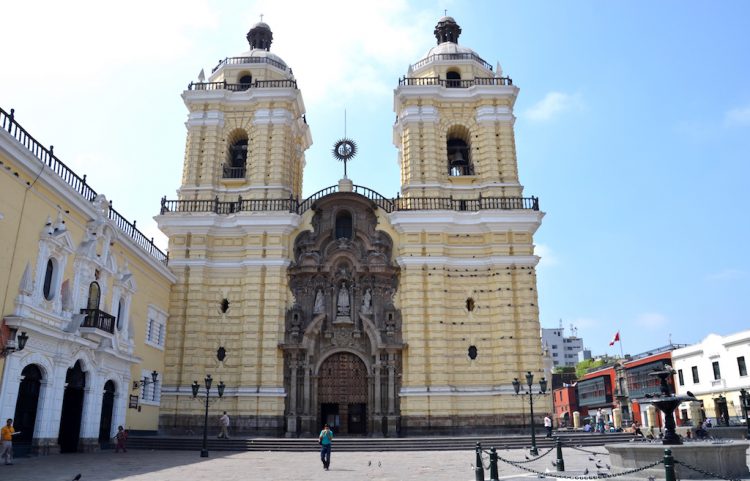
6. Things To Do
Lima wins here. While unscientific, TripAdvisor has over 300 things to do listed for Lima.
In comparison TripAdvisor has over 200 things to do listed for Medellín when you include the other municipalities in the metro area like Envigado and Sabaneta.
Lima has more things to do due to the city being over twice the size in terms of population. But both cities have many things to do in the city as well as many things to do nearby.
Well over 120 things to do in and around Medellín have been covered on this website over the past several years. We have covered over 15 shopping malls in Medellín on this website and the best churches in the city.
However Lima has more shoping malls, churches, sights and landmarks, more of everything due to it being a much bigger city.
The country of Peru also has many things to do including the famous Machu Picchu. But Colombia is the second most bio-diverse country in the world after Brazil.
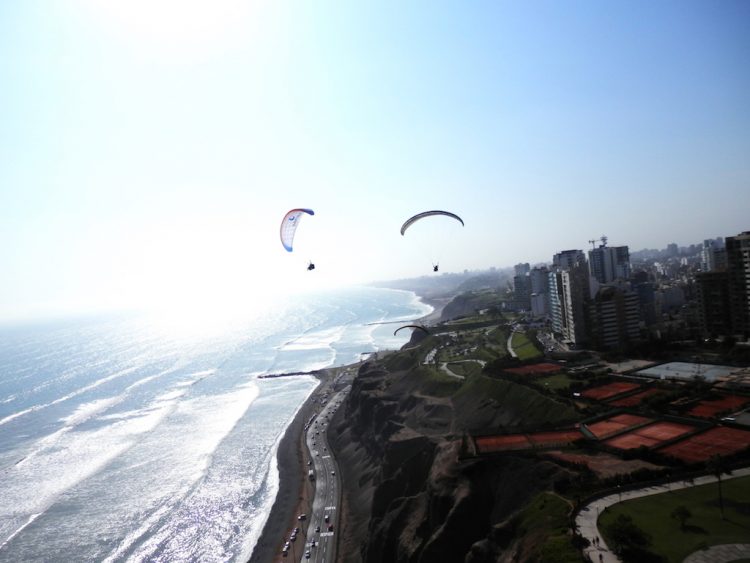
7. Safety
Lima arguably wins here. Lima generally has lower crime rates than are found in the smaller city of Medellín.
The reported homicide rate in Lima for 2015 was relatively low at 5.0 homicides per 100,000 habitants, but this was up from a lower rate of 4.7 in 2014.
In the last decade the safety and security in Lima has improved immensely but street crime is still prevalent in the city.
Medellín’s homicide rate in 2015 was 20.0 per 100,000, which was the lowest in 40 years. Medellín now has a homicide rate that is lower than is found in St. Louis, Baltimore, Detroit or New Orleans in the US.
Other crime rates have also been dropping in Medellín. For example, thefts of people in Medellín between January 1 and May 14, 2016, were 13 percent less than the same period in the previous year.
In a recent survey of 12,548 in Colombia in terms of citizens feeling safe in their barrio, Medellín fared well with citizens in Medellín feeling the safest in their barrio compared to all the other cities in Colombia.
In both cities take care and don’t go out with all that jewelry on and don’t flash cell phones and money. Also don’t use ATMs on the street. Keep in mind that lifestyle plays a significant role in safety.
8. Infrastructure
Medellín wins here. Medellín in general has a more modern infrastructure than is found in Lima.
In Medellín it is safe to drink tap water. Drinking tap water is not recommended in Lima.
Water quality in Lima and Peru is a huge issue. The source of Lima’s water is the Rio Rímac, which is one of the world’s most polluted rivers. The water that comes out of the tap in Lima is very high in heavy metals and has very high levels of chlorine.
In Lima and the rest of Peru occasional power outages and water outages are a way of life.
I have a good friend living in the Miraflores neighborhood in Lima that tells me he typically experiences power outages several times each year. He recently told me about an expat he knows that has lost water service in his building several times this year.
I have lived in Medellín for over six years in several neighborhoods and during this time experienced only two power outages.
One outage I was notified about beforehand by the electric provider (EPM) and it was due to maintenance of a substation. The other outage was for a couple hours during a major storm. I have never experience an unplanned water outage.
Claro is considered by many expats to have the best Internet service in both cities and the company reportedly provides good service in both Lima and Medellín.
Outside of Lima infrastructure in Peru will typically be more lacking. I have talked to several expats living in Peru outside of Lima that experience more frequent outages and less reliable and slower Internet.
9. Pollution
Medellín wins here. Lima reportedly has the worst air pollution out of all the cities in Latin America according to The World Health Organization (WHO).
Lima is nestled between the Andes Mountains to the east and the Pacific Ocean to the west.
The city has heavy industry plus all the vehicles in the city but receives almost no rain to help clean the air. Also except for an occasional sea breeze, there is little or no wind in Lima.
But Medellín also has pollution issues. Last year WHO reported that Medellín was ranked #9 in a list of the 10 cities most polluted in Latin America.
Medellin is located in a canyon in Colombia’s Andes Mountains. The city has mountains surrounding the city, which do not allow for easy dispersion of pollutants.
So air pollution tends to stay in the Medellín metropolitan area. But fairly regular rain in the city can quickly clean the atmosphere.
In general Medellín has noticeably less air pollution than is found in Lima. Medellín is also one of the cleanest cities in Latin America and you won’t see much litter.
10. Traffic
The two cities arguably tie here. Both cities can have pretty bad traffic. A survey by Waze last year rated Medellín as one of the worst cities in Latin America in terms of traffic.
A recent news article reported that the general manager of Uber in Lima estimated that 25 percent of Lima residents are trapped more then two hours in traffic each day in the city.
While the traffic can get pretty bad in Medellín, the worst traffic is primarily found in the El Poblado and Envigado neighborhoods during rush hours in my experience.
My impression is the traffic in Lima during rush hours can at times be worse than the traffic found in Medellín.
11. Access to U.S., Europe and the rest of Latin America
Lima wins here. Lima’s Jorge Chávez International Airport has non-stop flights to over 35 international locations in the U.S., Europe and Latin America.
From Lima you can fly non-stop to the U.S. to Atlanta, Dallas/Fort Worth, Fort Lauderdale, Houston, Los Angeles, Miami, Newark, New York (JFK), Orlando, and Washington D.C. (Dulles). Lima also has a non-stop flight to Toronto.
From Lima you can fly non-stop to Amsterdam, London, Madrid and Paris in Europe. In addition from Lima you can fly non-stop to over 25 different cities in other countries in Latin America.
In addition from Lima you can fly to over 15 domestic destinations in Peru.
Medellín’s José María Córdova airport (MDE) is the second largest airport in Colombia and it has non-stop flights to 13 international locations in the US, Europe and Latin America.
From Medellín you can fly non-stop to Atlanta, Fort Lauderdale, Miami and New York (JFK) in the U.S.
From Medellín you can also fly non-stop to Madrid in Europe. In addition from Medellín you can fly non-stop to Aruba, Curaçao, Lima, Maracaibo, Mexico City, Panama City, San Salvador and Valencia (plus seasonally to Punta Cana).
There are also many domestic Colombia flights available from Medellín as the city has two airports: the international José María Córdova airport and the domestic Olaya Herrera airport (EOH). From Medellín’s two airports you can fly non-stop to over 30 cities in Colombia.
12. History and Culture
Lima wins here. Lima has a rich history tracing back to as early at 2200BC as well as being part of the Inca Empire in the 15th century. In the pre-Columbian era, what is now Lima was inhabited by Amerindian groups, which was later incorporated in the 15th century into the Inca Empire.
In 1532, a group of Spanish conquistadors defeated the Inca ruler Atahualpa and took over his empire. The Lima area became known as City of the Kings when the city was officially founded in 1535.
Lima gained prestige after being designated capital of the Viceroyalty of Peru. During the next century it flourished as the extensive trade network was integrated with the rest of the Americas.
In 1687 and in 1746 the city experienced powerful earthquakes but the city was rebuilt each time. Peru gained its independence from Spain in 1824 and Lima became the capital of Peru.
Lima enjoyed prosperity until the 1879-1883 War of the Pacific when the city was occupied by Chilean troops. After the war, Lima underwent renewal and expansion until the 1920s.
In 1940, Lima experienced another major earthquake but the city quickly rebuilt and Lima started a period of rapid growth spurred by migration, which has continued unabated to current times.
The valley of Aburrá where Medellín is located was discovered by Spanish explorer Jeronimo Luis Tejelo in 1541. But the settlement of Medellín was founded later, in 1616 by Spanish conqueror Don Francisco Herrera Campuzano.
Early development in Medellín started in the southern part of the city and moved towards the center of today’s city with the building of several churches including Iglesia de La Candelariaand Iglesia de la Veracruz.
Historians believe that many early settlers to Medellín were Spanish Jews fleeing the inquisition. These early settlers focused on self-reliance and had little interest in outside contact and neighboring regions.
They came to be known as hard workers with a fierce independence streak and these traits remain today in Medellín.
The biggest growth in Medellín began only at the beginning of the 20th century with the arrival of the railroad and coffee production became more important and permitted the country to enter the world economy.
Mine owners and coffee barons invested their profits in an emerging textile industry and their gamble paid off big.
Both Medellín and Lima today are modern cities with many high-rises. The cultures of both cities can be described as contemporary. But you will also find more historical sites in Lima than you will find in Medellín.
In both cities you will see much construction underway as both cities continue to push for growth.
Medellín has also been solidifying its reputation as a pioneer of inventive architecture and urban renewal, with an array of bold public projects.
This helped Medellín to be named the most innovative city in the world in 2013 in a competition organized by the Urban Land Institute.
13. Job Opportunities
Lima wins here. Lima is a much bigger city so obviously there are many more job opportunities in Lima in comparison to smaller Medellín.
There are also more multinationals located in the much larger city of Lima. However there still aren’t a lot of work opportunities for foreigners in either city, especially if you don’t speak Spanish fluently.
While there are English teaching job opportunities in both cities if you are a native English speaker, competition is fierce and the pay isn’t the greatest.
Historically the unemployment rate in the larger city of Lima tends to be somewhat lower than in Medellín.
To work in either country will require work visa. Note the pensionado (retirement) visas in both countries do not authorize you to work.
14. Public Transportation
Medellín arguably wins here. Medellín has an extensive metro system with integrated metro trains, a new tram-line, integrated articulated buses and four cable car lines.
The Medellín metro is spotlessly clean, easy to use and very inexpensive. Medellín’s metro system opened in 1995 and has been in place for over 20 years.
Medellín’s metro has nine lines (including integrated Metroplus articulated bus lines and cable car lines) and over 60 stations throughout the city.
In comparison, Lima’s metro system opened in 2011 and it only has a single rail line with 26 stations. Lima plans to add additional lines to its metro. Construction of line two started in 2014, which is planned to open in 2019.
Lima also has a rapid bus system known as El Metropolitano as well as many other bus routes in the city.
Medellín also has a rapid bus system known as Metroplus that is integrated with its metro system. Medellin has many other bus routes in the city including many routes that are integrated with its metro system.
Both cities have inexpensive taxis but taxis generally cost more in Lima. The ubiquitous yellow taxis in Medellín are metered and you just need to pay the fare on the meter.
In comparison, Lima has unmetered taxis and taxi drivers can and will choose not to take certain fares in my experience. The majority of taxis in Lima are unregistered (unofficial).
To ensure no surprises when arriving at a destination always make sure to find the price to go to a destination before you get in a taxi in Lima. At night it’s also important to use registered taxis in Lima for your safety.
Medellín arguably wins this category due to having a more extensive metro system and metered taxis.
15. Currency and Banking
The cities arguably tie here. Both Colombia and Peru have fluctuating exchange rates. Colombia uses the Colombian peso and Peru uses the Peruvian Sol.
The fluctuating exchange rates have been beneficial lately in both countries with the strong US dollar.
Two years ago, the exchange rate was about 1,968 Colombian pesos to the USD. It is now about 2,863 pesos to the USD. This has made real estate in Colombia over 31 percent cheaper in terms of US dollars than two years ago.
But the fluctuating exchange rate moves both ways in Colombia. Just seven months ago the exchange rate was over 3,400 pesos to the USD. So in just seven months costs have gone up about 18 percent in Colombia in terms of USD with the volatile exchange rate.
The fluctuating exchange rate in Peru has also been beneficial with the strong US dollar but not as beneficial as in Colombia.
Two years ago, the exchange rate was about 2.86 Peruvian Sols to the USD. It is now about 3.36 Sols to the USD. This has made real estate in Colombia over 14 percent cheaper in terms of US dollars than two years ago.
But the fluctuating exchange rate in Peru also moves both ways like in Colombia. Less than seven months ago the exchange rate was 3.53 Sols to the USD. So in just seven months costs have gone up about five percent in Peru in terms of USD with the volatile exchange rate.
In both countries banks normally require a local ID to open an account.
In Colombia banks normally require a cedula de extranjería for foreigners to open an account. The cedula is a local Colombia photo ID you will receive after you have a visa.
In Peru banks normally require a carné de extranjería for foreigners to open an account. The carné is a local Peruvian ID.
16. Economic Freedom
Medellín wins here. Since both cities are in different countries it is important to compare the countries economically when considering them as places to live and one way to do this is to look at economic freedom.
In terms of economic freedom, The Heritage Foundation ranks Colombia as a country with a “mostly free economy”. It ranks Colombia as #33 out of the 178 countries that it ranks in the world in terms economic freedom.
In comparison, Peru’s economy is categorized as a “moderately free”. Heritage Foundation ranks Peru as #49 in terms of economic freedom.
In Peru a lack of progress has been made in addressing key structural deficiencies such as a complex tax regime and a rigid labor market, which undercuts productivity growth. Property rights reportedly are not as well protected in Peru.
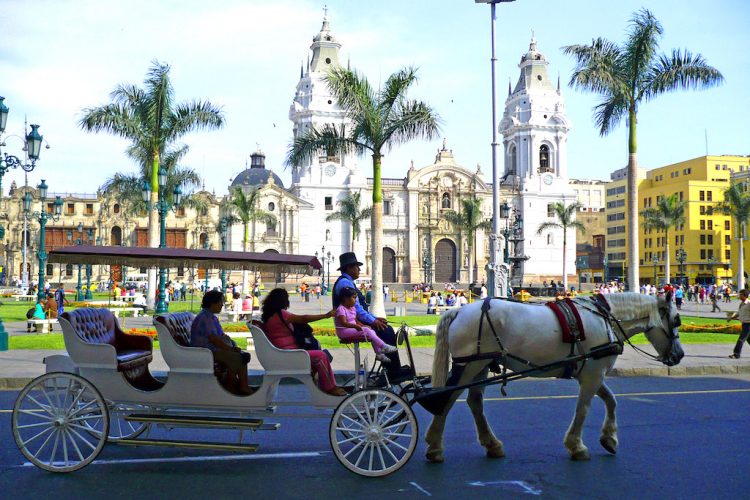
17. Language
The two cities tie in this category. Spanish is the primary language spoken in both cities. There are few English speakers to be found outside of the service industries such as hotels in either city.
It is difficult to get by in either city without speaking some Spanish since few of the locals speak English.
Most people that you will interact with in both cities during daily life, such as store clerks, taxi drivers and waiters will speak little to no English.
Education First ranks both Colombia and Peru lowly in terms of English proficiency. Education First ranks Peru in its English Proficiency Index at 52.46 and Colombia is ranked further behind at 46.54.
If you aren’t willing to learn some Spanish in either Lima or Medellín you will need to depend on someone that is bilingual or will become quickly frustrated.
18. Expat Community
Lima wins here. Lima is estimated to have a larger expat community than Medellín that speaks English.
The total country of Peru has 9,853 expats from the U.S., 1,658 expats from the UK, 1,223 from Canada, 590 from Australia, 211 from Ireland and 94 from New Zealand living in Panama according to the International Organization of Migration (IOM).
Likely at least half of the expats from those English speaking countries living in Peru live in Lima.
The total country of Colombia has 18,841 expats from the U.S., 1,237 expats from the UK, 985 from Canada, 220 from Australia, 131 from Ireland and 51 from New Zealand living in Colombia according to IOM.
According to IOM there are more expats from English speaking countries in Colombia than in Peru. But Peru is a much smaller country so these expats are more noticeable.
The majority of expats living in Colombia are found in Bogotá, which is the capital and largest city in Colombia, where most foreign companies have their offices. I have seen no official statistics for Medellín. But the expat community in Medellín speaking English is likely much smaller than is found in Lima.
I would estimate there likely are much less than 3,000 expats from North America and Europe living full-time in the city.
Both Medellín and Lima are emerging expat locations but they are definitely becoming more discovered and both have growing expat communities.
Having lived in Medellín over six years I see more and more expats in the city each year.
Internations actually ranked Colombia last year as being a more welcoming country for expats than Peru, ranking Colombia as number 5 and Peru as number 30.
19. Education Options
Lima wins here. Both Medellín and Lima each have over 30 universities. But Lima has more Spanish language programs and more bilingual schools available for expats.
With a bigger expat population Lima apparently has more Spanish language programs available than in Medellín. However, Universidad EAFIT located in Medellín is reportedly the largest Spanish language program for foreigners in Colombia.
Lima has over 10 English/Spanish bilingual schools for children plus some additional bilingual schools in other languages such as French and German.
I am aware of only two bilingual (English/Spanish) schools for children in Medellín.
20. Ease of Getting a Visa
The two cities arguably tie in this category. Both Colombia and Peru have a number of visa options. The visa processes for both countries are fairly straightforward.
Both countries have retirement (pension) visas with low-income requirements and no up front investment required.
Colombia’s retirement visa (TP-7) requires a minimum retirement income of three times the minimum wage in Colombia. The minimum wage in 2016 is 689,454 pesos per month.
The minimum retirement income needed for the Colombian retirement visa is only about $722 per month at the current exchange rate. The Colombia retirement visa fee is $205 plus an application fee of $50.
In comparison a Peru retirement visa (rentista visa) requires a higher minimum retirement income of $1,000 per month. The Peru retirement visa also can take months to receive but it is a permanent visa.
Both countries also have investor visas as well as several other visa options including student visas and marriage visas.
Peru’s investor visa requires a minimum investment of $30,000 plus you have to demonstrate a plan for creation of five jobs if investing to form a company.
Colombia’s business investor visa (TP-7) has a lower minimum business investment that is no less than 100 times the minimum wage in Colombia or no less than about $24,079 and no job creation requirement.
Colombia also has a property investment visa with a minimum investment of 650 times the minimum wage in Colombia. This is more than $156,511 at the current exchange rate.
Colombia’s work visa (TP-4) is relatively easy to get, as it primarily requires just a work contract with a Colombian company. This is similar to the work visa in Peru, which requires a work contract with a Peruvian company.
Colombia streamlined its visa process a couple years ago. You can apply online and approvals are now very fast, typically in a few days. Or you can go directly to Bogotá and normally get a visa the same day you apply.
Peru’s visas typically require more paperwork like an Interpol certificate. Reportedly Peru’s visas can take much longer to receive.
However, many of Peru’s visas can be good for an indefinite time period. In comparison, Colombia’s Temporal (TP) visas are typically good for a year except the marriage visa, which is normally good for three years. Colombia’s TP visas must be renewed.
After having most Colombian TP visas for five years (or three years for a marriage visa) you can apply for a resident (RE) visa that is good for five years, which we covered previously.
21. Seismic Risk
Medellín wins here. Lima and the rest of coastal Peru have a history of seismic activity. Since 1940, Lima has been impacted by at least five major seismic events, which caused deaths.
Quakes are very frequent in Peru, with about 170 earthquakes felt by people in the country annually.
Medellín is also at risk but hasn’t really experienced many earthquakes historically or near as much damage as experienced in Lima.
But seismic risk can be mitigated – recently built buildings in Lima as well as many of the older buildings in the city are built to withstand seismic activity.
The city of Lima has also become stricter about its building codes but these codes aren’t always enforced.
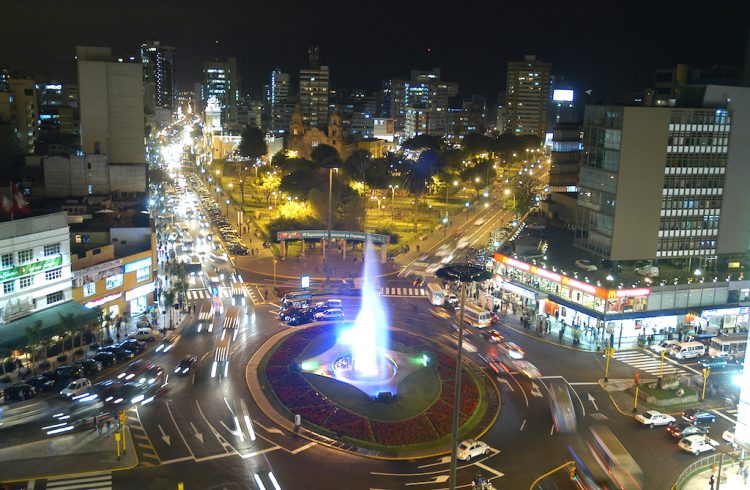
The Bottom Line – Medellín vs Lima
In our Medellín vs Lima comparison, Medellín beats out Lima in eight of 21 categories. Lima beats out Medellín in eight categories and the two cities tie in five categories.
So the end result in this somewhat subjective comparison of 21 categories is a tie with the categories equally weighted.
But to really determine which city is best for you to live depends on which categories are more important to you. A higher weighting should be used for more important categories.
For example, if cost of living, having a better climate, good infrastructure, good healthcare and less pollution were most important, Medellín would win.
If having more restaurants and nightlife, more things to do, a bigger expat community and better access to the U.S. and Europe were your most important categories, Lima would win.
The only way to really know which city is better is to spend time in both. I have spent time in both cities. Both have their pros and cons. Neither city is ideal but I prefer Medellín.
At the end of the day — there’s no “best place to live”. There’s only the best place for you to live. One man’s paradise is another man’s hell.
That’s why we continue to recommend living in a foreign city for six months to a year before committing. Only then can you determine if a foreign city is right for you.
I have a good friend living in Lima who is planning to move to Medellín after visiting Medellín for a month earlier this year. His two primary reasons for moving are the lower cost of living and better climate in Medellín (more sun).
The foreign retirement publications have been touting Medellín as a top foreign retirement location many times in the past. But the retirement publications appear to have overlooked Lima that compares well in several categories.



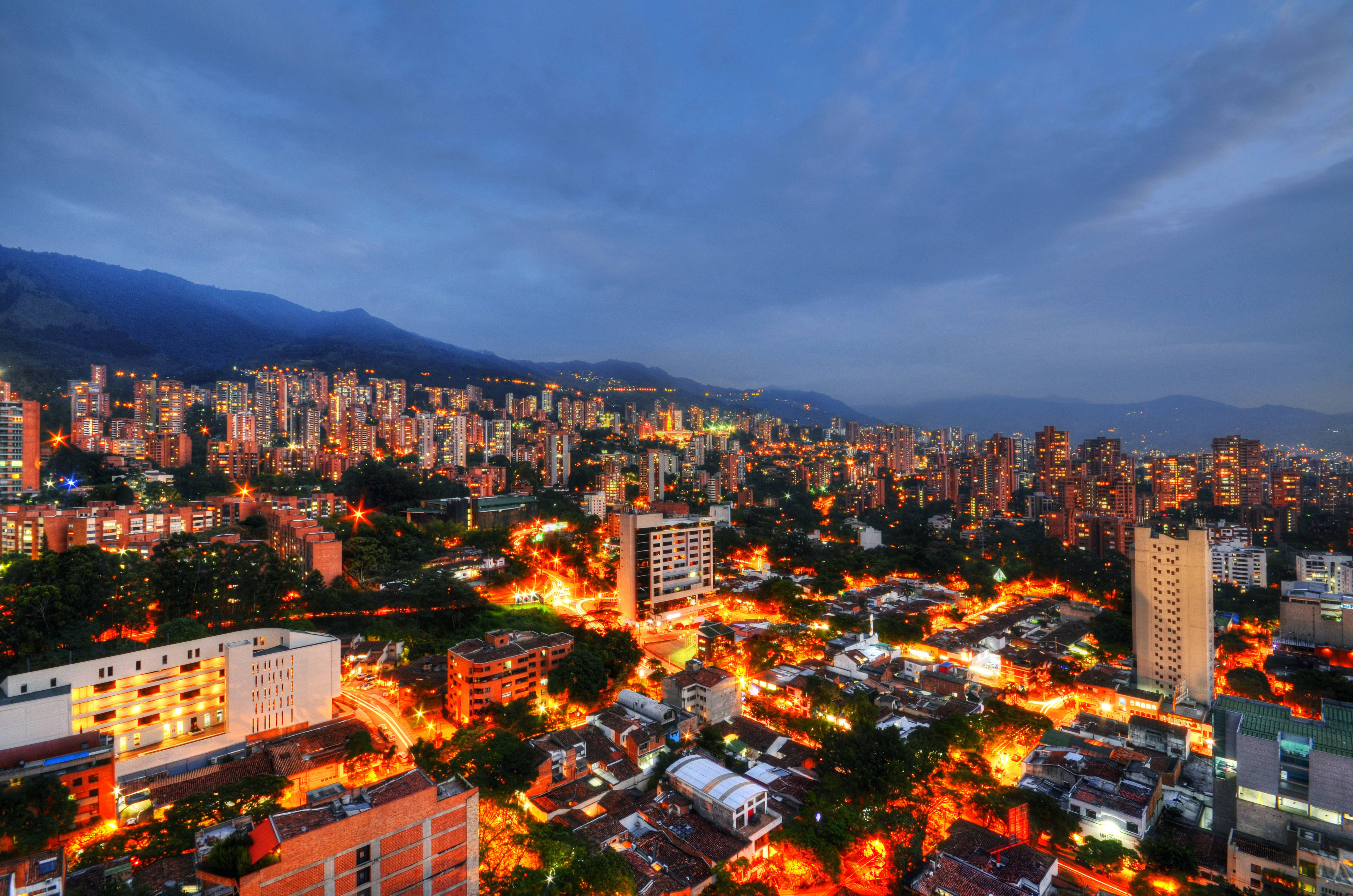








Well, don be shy . How about the quality of women?
That’s a subjective measure plus I am married to a Colombian so I’m definitely biased so I didn’t include that.
But my friend that is moving from Lima to Medellín did mention women as another reason he is moving.
I was thinking the same thing.
Thanks for mentioning it Patrick… Medellín definitely crushes Lima in that category. Colombian girls are not only way prettier but also more friendly.
Jeff, I look forward to your posts/emails. I arrived in Medellin in 2003 and stayed. Like you I have been to most of Colombia but never to Lima. I have added it to my list of must visit this decade list. There is always something to enjoy and appreciate everywhere. I do find living in Medellin to be an impossible standard to use to measure against everywhere. Living on vacation, in paradise is impossible to explain and your posts make it easier for me to share where I live. Thank you.
Thanks!
I suggest you not go to Lima from June to November when it’s overcast and grey most days, which can get depressing. You can find some amazing food in Lima and there is much to see in the city.
I am glad you mentioned the food in Lima. It is excellent.
Good work Jeff! Would it be possible for you to include another category in your future comparisons?. While there is no empirical way to measure this, I think it would be very useful to get a gauge of the general friendliness and/or openness to foreigners of the local population. Paisas are generally friendly and welcoming to foreigners, but what about the locals in other cities???? Do you think that you could extrapolate this? ..
Hi Robz,
Thanks. Above under category 18 I included a link to an Internations survey results where they ranked Colombia #5 in terms of looking in which countries local residents are the friendliest (or, alas, rather distant) to foreigners. I can break this out into a separate category in the future and include some anecdotal experience comments about the cities.
I definitely agree with you that paisas are generally friendly and welcoming to foreigners. When I visited Lima I got the impression that Peruvians are less friendly towards foreigners, which is probably why Internations’s survey has Peru ranked #30.
Thanks Jeff!
I would take that “expat insider” survey with a HUGE pinch of salt! Having previously lived in Portugal for 3 years, I would certainly not agree that the Portuguese are more accommodating or friendlier to foreigners than Colombians…. To be clear, I had a great time living in Portugal and I think the Portuguese are generally friendly and open to foreigners, IMO, they’re just not nearly as friendly as Colombian’s particularly paisas. But they are street ahead in English language skills!!!!! :). Similarly, I never felt that Mexicans were particularly celebrating of foreigners, when I’ve visited there…but I never lived there so maybe it’s different…I’m looking forward to your next post!
I have been to Portugal and agree with you. Also Mexico, Brazil and Indonesia in their top 10 are questionable for me based on the time I have spent in all three countries.
Too bad they don’t appear to disclose their methodology or survey questions.
people are very friendly when looking to sell or get tips..
? Desert, not dessert. And I think the precip measurements should be mm? Otherwise, I’m thinking massive flooding? Let me know if you need an editor… We will be living there in two months time!?
Thanks, fixed in the article.
Also, your tallies at the end don’t line up; I counted eight wins for each and five ties?
Thanks! I changed one of the rankings from a tie to Lima and didn’t update the end section – it’s now fixed.
Great article! We’re looking forward to an exploration of our new life in Medellín! My dad went to Lima for a month years ago and his observations lined up with yours.
Wow…. super comprehensive article… thank you. Since 2003, I’ve been to Lima more than 15 times and have probably spent collectively over a year there, mostly in Lima. I’ve been to Colombia about 8 times. I would say that if the costs of everything were the same, I would choose Lima over cities in Colombia. But… Lima is more expensive, especially in real estate. A condo you could get for $50K in Laureles couldn’t be had for less than $150,000 in Miraflores. Rents are likewise more expensive in the nice neighborhoods in Lima.
Public transit costs roughly the same. Dealing with taxis can be tiring and expensive in Peru because of not having taximeters. But, Uber is now in Peru. Traveling between cities in Colombia is easier too, with flights all over the place (without always having to change planes in Bogota). I speak Spanish very well, so that’s not an issue for me, but to really live easily in Peru or Colombia, you need to know Spanish.
I have found Colombians to be the most polite people I have ever seen. Not to say that Peruvians aren’t, but it’s more obvious in Colombia. The food… well, vegetarian food is much better with more variety in Colombia, whereas in Peru it gets very repetitive. Regular food is maybe better in Peru. Putting the money matters aside, I have to go by how I feel in either place, and I just feel better in Lima. Since I am not married, a big part of the reason is that I find the average Peruvian to be more attractive than the average Colombian. And, I get a lot more attention in Peru because I’m tall, skinny and light-skinned. I also find that Peruvians follow through better than the average Colombian.
Maybe my ideal life would be spent December through May in Lima, and the rest of the year in Medellin/Pereira? Being next to the ocean during breezy, sunny weather in Lima is exhilarating. The places are so different that you really do have to spend time in both before you could decide. Disclaimer: what I wrote is just my opinion… I’m not judging anybody else who doesn’t feel the same way, and not trying to be contrary or start arguments with anyone. Just puttin’ in my two cents.
Peru is truly an amazing place to visit for us Canadians. Thank you for the great post!
Interesting article thanks for posting.. I’ve traveled to both Lima and Medellin fairly extensively. (about 8-10 trips each if you call that extensively) but all in the last 4 years.. I can say many of these categories as in life are very subjective.
Food: Lima has more variety for sure.. they take their food seriously, use many more spices, much more variety and if you like seafood, for sure Lima wins.. that being said I like the food in Medellin especially the daily lunch specials.. hard to beat the prices for such a big meal.
Security/Safely; Outside of Mira Flores or San Isidro where i feel pretty safe, I’d have to go with feeling safer in Medellin as a whole. Lima gives me that “big city” feeling and I don’t get that from Mde.. I’m from outside Los Angeles btw. I know Buenos Aries and the Centro part of Mde pretty well and I always feel secure.
Cost to Travel; I guess about the same but I feel Mde has better value, maybe that’s because most of my travel to Lima was 2-4 years ago and the dollar is stronger now so I realize the Value of the dollar more in Mde since my trips are more over the past 1-2 years even though I visited Mde before visiting Lima for the first time about 4 years ago. The dollar goes pretty far in both cites but as mentioned above, I think Real Estate in Mde is as a whole cheaper in the areas most foreigners would want to live.
Friendliness; I would have to go with the Paisas for sure.. the nicest people of any foreign country I’ve ever met. (Con muchisimo or mucho gusto Senor is something you hear daily from the taxi drivers and other public workers in Mde but not so much in Lima). I get more of a Bogata feeling from the people in Lima.. a big city feeling from the place and the people.
English Language; No doubt Lima, just because of the amount of tourist that pass through Lima for a couple of days on the way to Machu.. just hang out in Miraflores and many locals speak English, it’s just more touristy. Very few in Medellin speak English, even in the upscale El Poblado area. I like that, though.
Things to Do; Lima for sure.. some heavy hitter places for sure to see. Machu Picchu of course, Gateway to the Amazon, Colca Canyon and many more plus the beach is interesting if you don’t happen to live by one.. Lima’s nightlife is crazy.. so many clubs/bars and they get many American and euro bands that come through there.. It’s just a bigger city but I also like the feel of Laureles or El Poblado for nightlife because everything is so close, not much travel between places. Lima is more popular with foreign travelers so you’d be more likely to meet and talk to foreigners in Lima in my opinion though in Poblado not a day goes by I’m not meeting somebody from the states or somewhere else… there are just many more in Lima/Miraflores for sure.
Public Tansportation; not even close in my opinion, Mde wins.. I get tired of bargaining with the taxi’s in Lima and them trying to gouge you once they know you’re a Foreigner. The Metro in Mde is better/newer but those little bus/vans in Lima can be fun and cheap.. if you have the courage to take them.
Lastly, since it was brought up was the subject of Women; It’s very subjective but really it’s not close, IMHO.. Medellin. As a whole, they try to look better maybe it’s too important in fact. It’s very embedded in the culture but it is what it is. Go to an average nightclub in Miraflores or Barranco (a popular nightlife district in Lima) or one in Poblado and it’s not really close.. If you’re in a high-end mall in either city you’re going to see many pretty girls but that’s super subjective and not so important. 🙂 I think Colombia as a country is more famous for its pretty girls though.
Just my opinions and experiences… both cool places but to “live”, I’d pick Mde, better infrastructure, cheaper real estate (for now), prettier and better weather.
For a 60 year old man visiting with a 70 lb dog, are there any safe areas you would recommend (decent air), in Peru…on the cheap? Rural areas are also welcome. Thing is, I would not be driving, so i’d have to hire minivans or something, and be relatively stationary in whatever area. Me and my dog are like father and child.
I just dont want to stick out, in areas that perhaps it is unusual for “DOG OWNERS,” to roam.
We tend to go for long walks, then we go indoors and do inside activities.
A list of three or four inexpensive, but safe areas would be nice.
This is a fanttastic comparison of the two cities.